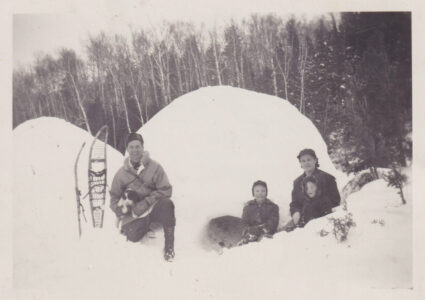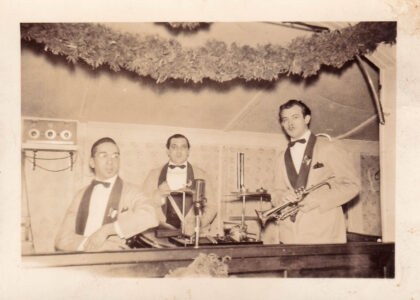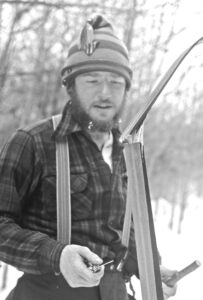Takin’ the fun out of fungi
In journalism parlance, “scoop,” as a noun, means the latest news. As a verb, it means to get your story in print before any of your rivals.
In the dog-eat-dog J-Biz world, where breaking news is everything and morality is nothing, scooping another paper or reporter is just bizness as yoo-jool. In such cases, newspaper morality isn’t just deficient — it’s wholly absent. That said, I found myself on the horns of a dilemma when faced with scooping one of my besties and my fellow columnist, Bushwhack Jack Drury.
There were no two ways about it: While the ethics were sketchy, there was nothing sketchy about the story’s potential appeal. And knowing the Milk of Human Kindess flows through Jack’s veins, while seeing my follow-up on his column might momentarily take him aback, maybe even make him mildly miffed, his joy at my success would nullify the fact that I stole it right under his nose.
The story is about the nexus between his namesake, his great-uncle Jack, Pancho Villa, and Saranac Lake.
In a nutshell, Jack comes from a family of mining engineers — his grandfather, his great-uncle and his father worked for The American Smelting and Refining Company in Mexico. The older two worked there early in the 20th century, including during the Mexican Revolution.
Pancho Villa, the revolution’s most famous and photogenic warlord, hated the American companies who were in Mexico (and probably the ones who WEREN’T there as well) for an obvious reason: The peons supplied all the sweat and scut work for chump change, while los gringos scored all the big bucks (except, of course, those they used to grease the palms of the country’s crooked politicians — pardon the redundancy).
One of Pancho’s high points, in a manner of speaking, and one of TASaRC’s low ones, took place in 1916 and became known as the Santa Isabel Massacre. Basically, in the course of a good old fashined train robbery, a bunch of Pancho’s compadres dragged 17 TASaRC employees off the train and murdered 16 of them. Whether Pancho knew and approved of the murders beforehand wasn’t known, nor, of course, was it relevant — especially to the 16 dead guys. But it gives you an idea of the lawlessness of the time.
This background should give you a good idea of the state of Mexican revolutionary-U.S. mining engineer relations in those wild and wooly days. And thus, it should come as no surprise that a bunch of Villa’s goombahs kidnapped Great-Uncle Jack and held him hostage in a cave for two months before someone coughed up the ransom, so to speak.
And this takes us to the next part of the Villa-Druy-Saranac Lake connection, for Jack’s great-uncle died of TB here in 1936, at the tender age of 39 — TB he contracted in Mexico from conditions in the cave and cooking over a wood fire. At least that was his widow’s diagnosis. I, however, disagree.
Now, I know what you’re thinking, which is how much chutzpah do I have that I think I can diagnose ANY medical diagnosis — especially at this distant remove? I mean, I can hear you saying, “What does the Village Dope know about diagnosing lung diseases?”
The answer to that question is, as Pancho would’ve said, “Nada.” But I know someone who does, namely My Brother the Pathologist.
–
Sealin’ the deal
–
Here’s the nitty-gritty: According to my bro, if Great-uncle Jack got sick in the cave, what he got was NOT TB, but was something called histoplasmosis. And how does my bro know this? Well, without access to an autopsy report or examination of lung tissue using modern means, he doesn’t. But it’s his best guess and it’s based on two things.
The first is a personal experience. Back in the early 1950s, one of my father’s med school professors came here to cure from TB. Alas, he didn’t make it, since none of the therapies worked. But as a result of his post-mortum, they found even though he had TB-like symptoms, what actually killed him was histoplasmosis.
And what is histoplasmosis? Well, coming from someone who passed two semesters of freshman biology ONLY due to the Christ-like kindness of my instructor (blessings on you, Fred McKenzie, wherever you are), I’ll say you probably know as much as I do. Or to put it in terms I understand, it’s a fungal disease that raises hell with your lungs.
But what’s most relevant to this column is not what it is, but how it’s spread. And the answer to that is mostly through bat and bird poop.
Now a quick quiz:
Q: What animals poop in caves?
I’m sure lots of them do, even hermits and spelunkers, but if you included bats in your answer, you may now go to the head of the class!
And thus, if Great-Uncle Jack got a lung disease in a cave, it was NOT TB, because TB is spread from person to person — it neither lurks nor lives in caves all by its lonesome. Histoplasmosis, on the other hand, does exactly that.
So it’s possible G-U J, in fact, did not have and die of tuberculosis. TB was rampant in the early to mid- 20th century (which powered the Glory Days of My Home Town). So he could have contracted it anywhere — which he couldn’t have done with histoplasmosis.
Since I’m known for my dogged pursuit of Truth, I interrogated my brother mercilessly.
“So you’re positive he couldn’t have gotten it from the cave or an open fire?” I asked.
“I am,” he said.
“How about getting it from the cave AND an open fire? Is that possible?” I said.
“No,” he said.
“Not ever?”
“No,” he said.
“You’re sure?” I said.
“As sure as I am that you’re a pain in the prat,” he said.
“So there’s absolutely no way he coulda gotten it from the cave?”
Finally, his legendary patience didn’t just wear thin — it shredded.
“Dammit!” he snapped. “Enough is enough!”
He took some deep breaths and waited till the bulging vein on the side of his head was no longer in danger of exploding.
“Look,” he said, “I don’t know everything about medicine,” he said. “So, yeah, he COULD have gotten TB from that cave.”
After all his apparent certainty, I was completely taken aback.
“Really?” I said.
“Yeah, really, Bozo,” he said. And then adding his coup de grace, he said, “Provided he’d shared the cave with a tubercular Mexican.”



